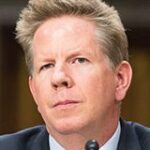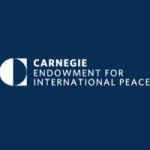Frederic Wehrey
 In Libya, religious endowments and their associated wealth have become a magnet for intense and often violent competition among Libya’s many political and religious currents.
In Libya, religious endowments and their associated wealth have become a magnet for intense and often violent competition among Libya’s many political and religious currents.
PART (VI)
By April 2020, however, battlefield developments further affected awqaf-related instability. In the summer of 2020, GNA-affiliated armed groups—backed by Turkish drone strikes and Syrian mercenaries—pushed out of Tripoli, capturing several towns that were either held by the LAAF or sympathetic to Haftar.
The GNA advance resulted in the retreat of Madkhalis from local awqaf offices, mosques, and other Islamic spaces.
In some towns, supporters of al-Ghariani or figures aligned with (or in the case of Zawiya, sympathetic to) the Islamist leader Mishri tried to fill the vacuum.
In tandem with this political reshuffling, the awqaf offices in Tripoli, and those in the east, faced a significant humanitarian challenge from the coronavirus pandemic, which Libya’s conflict, political divisions, and depleted medical infrastructure left the country uniquely exposed to.
During this crisis, religious authorities became an important adjunct to public health edicts by the weak GNA in Tripoli.
Similarly, in the east, the awqaf authorities supported the LAAF’s militarized response to the public health crisis.
By mid-March 2020, both awqaf offices had issued statements urging people to stay in their homes and to stop daily and Friday prayers in mosques.
In Tripoli, in particular, these Islam-based appeals were undercut by intense politicization of the public health response and challenges to the GNA awqaf office’s authority, coming from both rival Islamists aligned with al-Ghariani and local, town-based authorities.
By early 2021, power and religious influence in the capital region seemed set for another reshuffle.
After a ceasefire signed in October 2020 and a set of UN-brokered talks called the Libyan Political Dialogue Forum, Libyan delegates agreed in February 2021 to the formation of a new executive authority, the Government of National Unity (GNU), with Misratan tycoon Abdul Hamid Dabaiba as its prime minister.
Contrary to popular assumptions, the new government is not a boon to political Islamists, though Dabaiba does have prior ties to the Libyan Muslim Brotherhood and activist Islamist figures, especially those residing in Turkey and Qatar.
Even so, clerical figures and Islamists aligned with al-Ghariani are seeking to exploit the new government’s apportioning of appointments.
Meanwhile, political and business figures in the west and east alike have the potential to temper any intra-Islamist tensions by striking alliances and bargains that cross ideological lines.
Contrary to popular assumptions, the new government is not a boon to political Islamists.
As of this writing, no new appointments have been announced for the leadership of the Tripoli-based General Authority for Awqaf and Islamic Affairs—which is technically supposed to incorporate the eastern awqaf authority under the GNU.
As is the case with other economic and political institutions, it is likely that the awqaf authority will fall victim to continued intra-elite contestation and some degree of renewed ideological jockeying in the period before the proposed Libyan elections in late 2021 to replace the GNU.
CONCLUSION
In the near decade since the fall of Qadhafi, a broad array of Libyan economic and political institutions have fragmented or collapsed in the face of competing pressures from ideological and political factions.
As a body with a long historical pedigree and broad powers of moral authority, land ownership, and revenue allocation, it is not surprising that the awqaf offices would become a magnet for contestation.
Its travails since 2011 reflect the frequent turnover of power in the capital, the rise of armed groups with local and ideological affiliations, a national split between parallel administrations in eastern and western Libya, and endemic tensions over political authority and financial autonomy between the capital and Libya’s far-flung towns and municipalities.
More significantly, perhaps, awqaf offices and holdings have been buffeted by severe rivalries within Libya’s Islamist field among various doctrinal currents, ideologies, and clashing clerical personalities.
Relatedly, the struggle for control of the awqaf has been linked to debates about the degree of foreign influence over the country’s religious sphere, most notably after the rise of the so-called Saudi-inspired Madkhali current—whose subservience to Saudi Arabia has been vastly overstated by foreign and Libyan voices alike.
Offices of awqaf have also been weaponized as part of the battle against terrorism in Libya, with rival personalities and currents accusing awqaf officials of complicity with so-called extremists.
Awqaf officials in both the east and west have been mobilized purportedly to deradicalize imprisoned jihadists from the Islamic State.
And most recently, awqaf authorities have been deployed as part of the country’s public health initiatives by authorities in the west and the east to regulate Islamic public spaces in the wake of the spread of the coronavirus in Libya.
Underpinning all of these developments has been the fraught legacy of the awqaf since the reign of Qadhafi, when these offices and assets became inextricably linked to the late dictator’s co-option and control of Islamic discourse and his collectivist approach to property and land—the fruits of which continue to be a source of conflict and instability.
Yet even before the dictator, awqaf holdings were instrumentalized by Libya’s ruling colonial powers, principally the Ottomans and the Italians, and the awqaf office’s authority and functions were shaped by reformist debates and deliberations underway at the time across the Arab and Muslim world.
Thus, the notion of a pristine and uncorrupted awqaf that is somehow insulated from political and foreign influence is misguided.
With their presence in the religious sphere through mosque appointments and influence over Islamic discourse, awqaf will continue to be viewed as important sources of moral and social authority.
Moving forward, awqaf offices will feature prominently in Libya’s broader challenges of state building and reconciliation.
With their presence in the religious sphere through mosque appointments and influence over Islamic discourse, they will continue to be viewed as important sources of moral and social authority.
Their supervision of property assets makes them similarly valuable as economic prizes.
Reducing factional competition over the institution will require the same broad-based reforms that Libya has so desperately needed over the years and that have proven so elusive: security sector reform, financial transparency and accountability, decentralization, and, perhaps most importantly, a commitment by elites to furthering the public good rather than self-enrichment.
***
Frederic Wehrey is a senior fellow in the Middle East Program at the Carnegie Endowment for International Peace. His research deals with armed conflict, security sector governance, and Islamist politics, with a focus on Libya, North Africa, and the Gulf.
___________
Carnegie Endowment for International Peace





